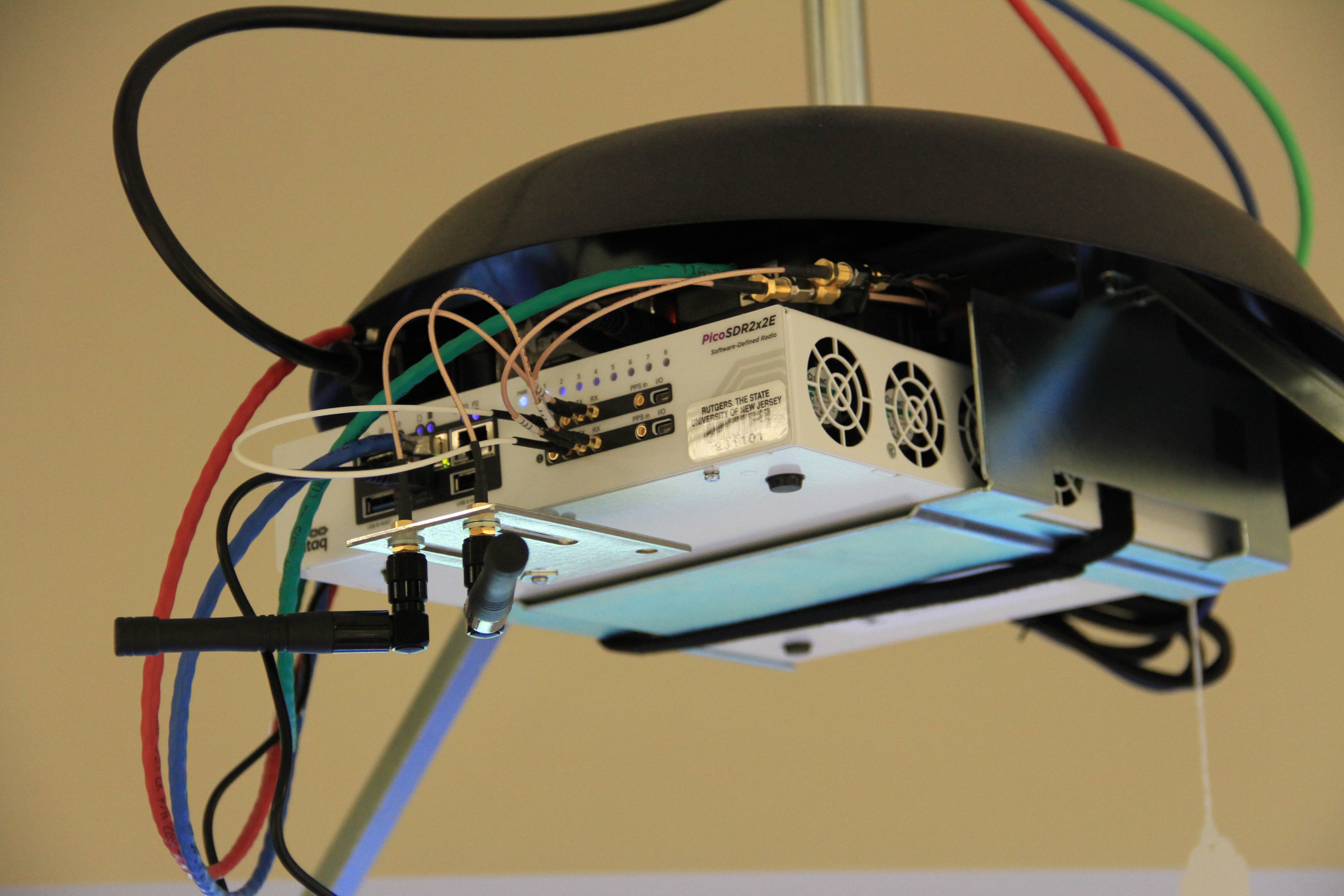| Version 22 (modified by , 10 years ago) ( diff ) |
|---|
Table of Contents
Nutaq ZeptoSDR
Photo 
Device ZeptoSDR Vendor Nutaq Interface type Gigabit Ethernet Device ID eth2 Frequency Range 300MHz - 3.8GHz Bandwidth 1.5 - 28 MHz
- They are attached to a Gen4 Node as the host machine via gigabit ethernet.
- In addition, they are powered by the host nodes, for remote on/off capability.
- The ZeptoSDR has a Zedboard FPGA, and Nutaq's RADIO420X board.
- It is tunable from 300MHz to 3.8GHz, with bandwidth between 1.5 and 28 MHz.
Nutaq PicoSDR
Photo 
Device PicoSDR2x2-E Vendor Nutaq Interface type Standalone, Gigabit Ethernet, 2x PCIe x4 Device ID N/A Frequency Range 300MHz - 3.8GHz Bandwidth 1.5 - 28 MHz
- Each is an independent ORBIT node, due to its embedded SAMC-514 computer, with an Intel Core i7 CPU running at 2.1 GHz.
- Each has a Perseus 601x FPGA, and a Radio420M FMC stack.
- They are integrated with the orbit experiment control infrastructure, as nodes 12-1 and 20-1.
- A Raspberry Pi is running the CMC management service, using telnet to control the PicoSDR's backplane.
ORBIT Nutaq Deployment
The Nutaq SDR devices in the ORBIT grid are 2x ZeptoSDRs, and 2x PicoSDR 2x2Es. The ZeptoSDRs are attached to Gen4 Nodes as host machines, while the PicoSDRs are standalone nodes.
The ZeptoSDR's ethernet interface is connected to a (third) dedicated Ethernet interface on the node (eth2) that is used solely for SDR related communication.
The nodes with Nutaq devices are distributed through the grid as shown in the deployment table.
GRID
| Node Coordinate | Device type | RF Daughter Boards |
| [1,12] | PicoSDR2x2-E | 2x Radio420M 2x2 MIMO |
| [20,12] | PicoSDR2x2-E | 2x Radio420M 2x2 MIMO |
| [1,13] | ZeptoSDR | 2x Radio420s 1x1 |
| [20,13] | ZeptoSDR | 2x Radio420s 1x1 |
Attachments (5)
- nutaq_picosdr.jpg (2.3 MB ) - added by 11 years ago.
- picosdr1.JPG (6.5 MB ) - added by 10 years ago.
- picosdr2.JPG (5.9 MB ) - added by 10 years ago.
- zeptosdr1.JPG (6.4 MB ) - added by 10 years ago.
- zeptosdr2.JPG (6.1 MB ) - added by 10 years ago.
Note:
See TracWiki
for help on using the wiki.
